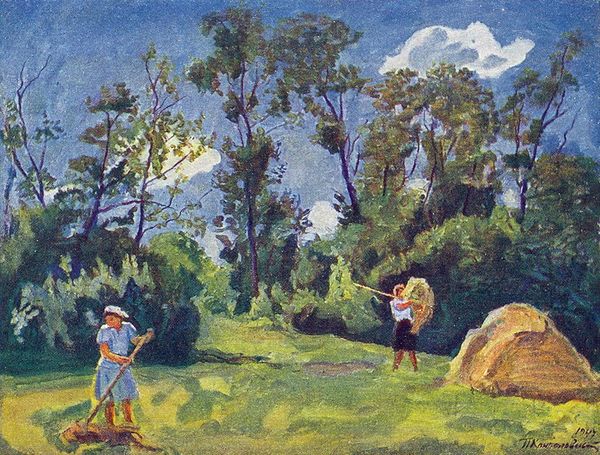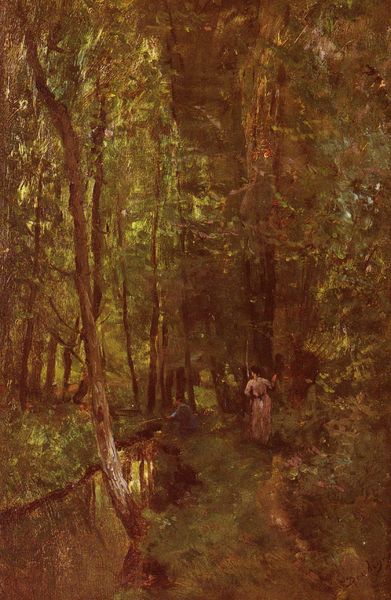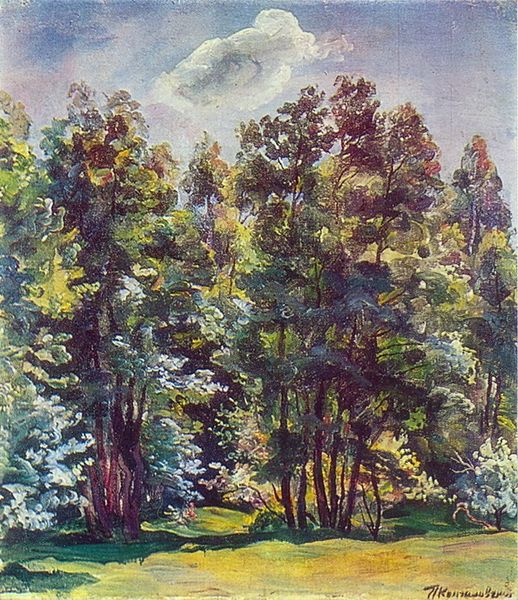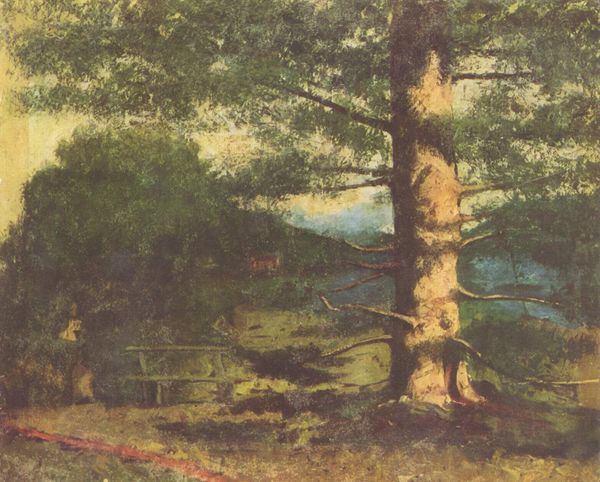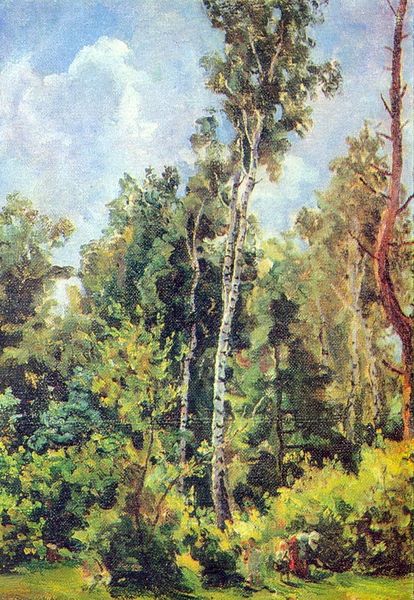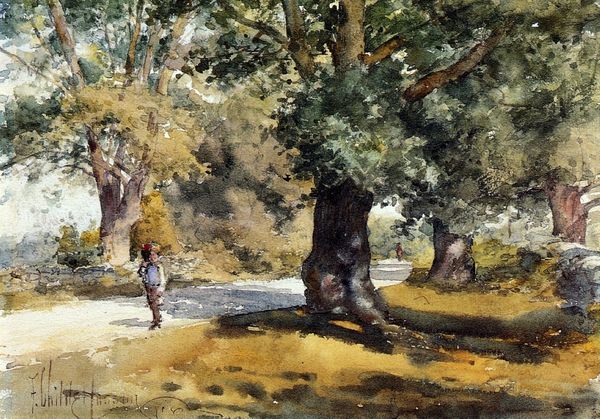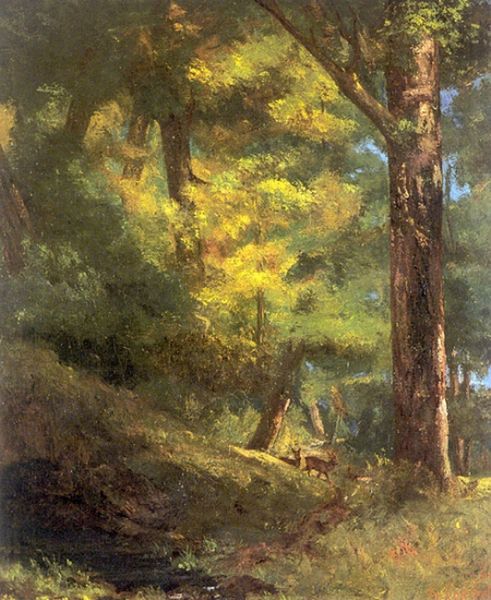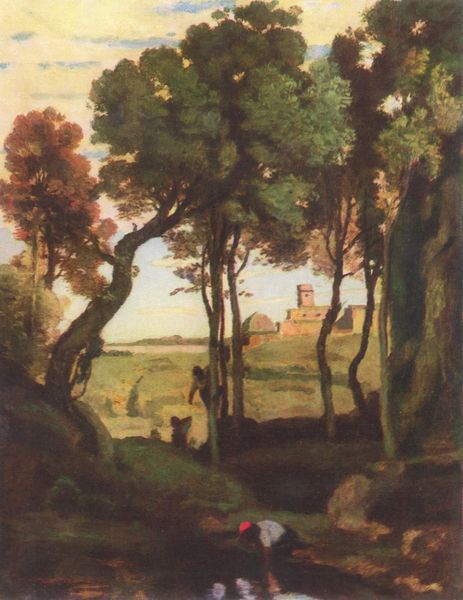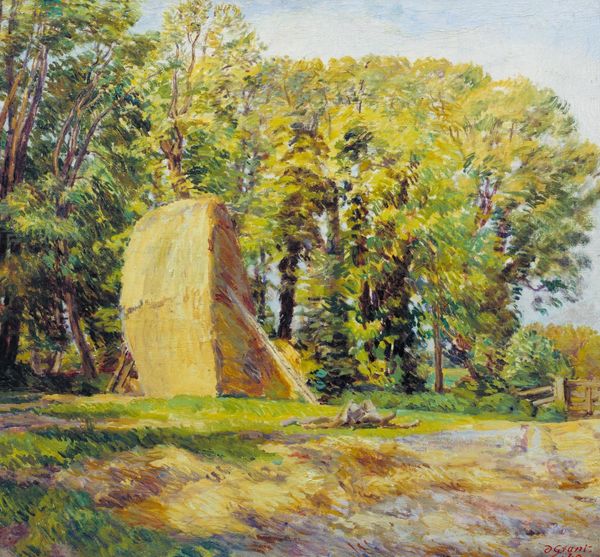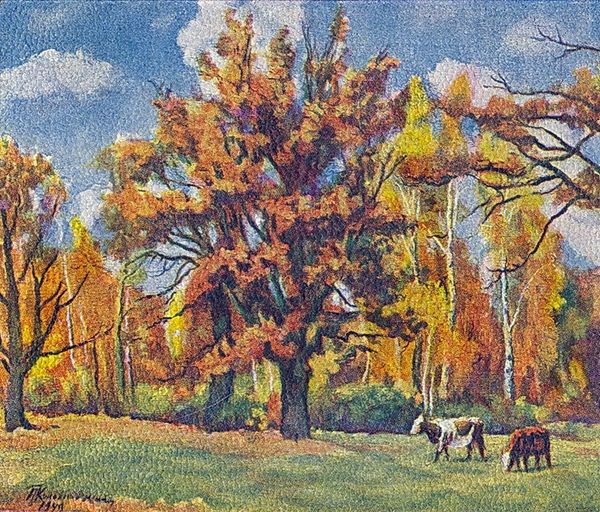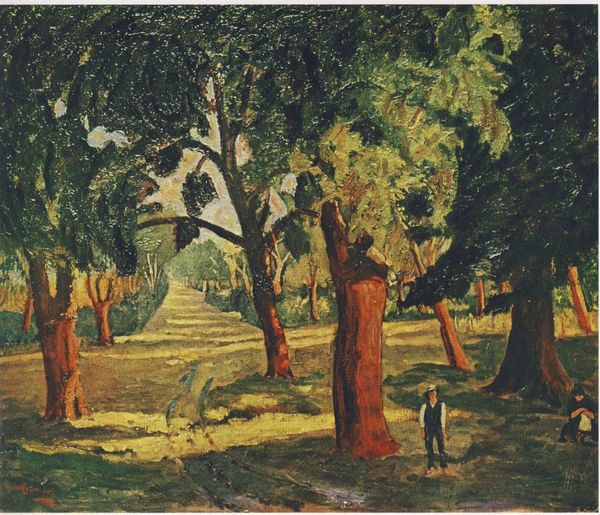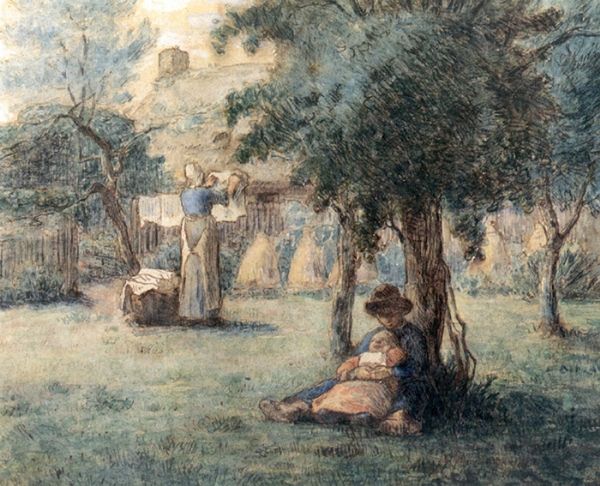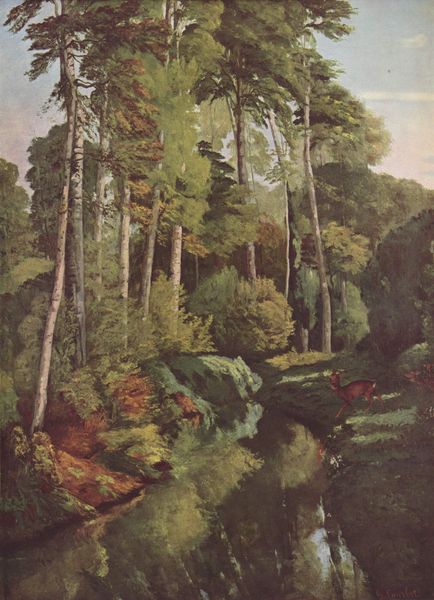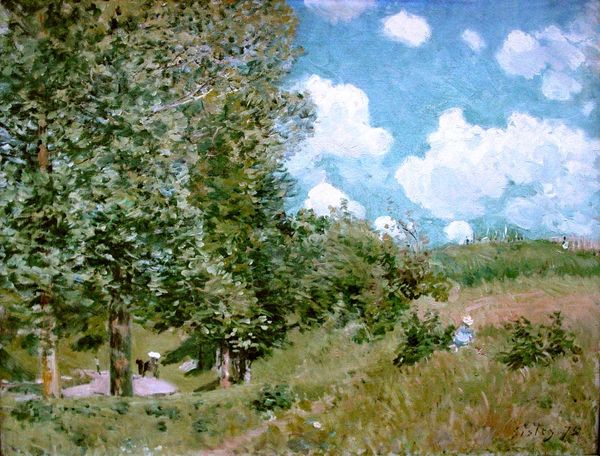
Dimensions: 75.5 x 61.5 cm
Copyright: Pyotr Konchalovsky,Fair Use
Curator: Pyotr Konchalovsky's 1947 work, titled "Alders," presents a captivating scene of rural life. Editor: It immediately strikes me as bucolic and quietly industrious, like a memory half-faded around the edges. The rough, almost palpable texture invites curiosity about its materiality. Curator: Indeed. The materiality reflects a critical juncture. Konchalovsky was deeply engaged with Western Impressionism but always filtering it through a distinctly Russian lens, grounding his paintings in a tangible sense of place. We should consider his earlier avant-garde experimentation and how he later favored the more accessible, representational style seen here. Editor: Absolutely, it’s worth pondering the choices of oil-paint on canvas and their relationship to earlier media like tempera, to understand better their relationship with traditional craft versus the industrially-produced canvas of this era. It gives this rural idyll a strangely contemporary frame. Curator: Beyond the formal elements, I'm drawn to how the trees act as silent witnesses to the women's labor. "Alders," you know, carries specific resonance within Slavic folklore. It is tied to notions of protection, renewal, but also, thresholds and transitions...Do you get any of that? Editor: Protection makes sense, looking at how the densely packed foliage seems to almost envelop the scene. I read the trees as also representing a constraint perhaps - suggesting their environment and social structure hems the women in. Notice how close they work together? Curator: An interesting observation! Their shared labor reinforces the notion of community and mutual dependence in a rural setting. While the style references impressionism, there’s still a sense of direct, almost documentary, realism to the way he depicts these figures. Editor: I am with you on the mutual dependence; perhaps it alludes to the complex labor dynamics that shape daily life in 20th-century rural Russia? Regardless of our specific interpretations, it feels so wonderfully embedded in a specific time. Curator: It absolutely does! This exploration into landscape and labor highlights how Konchalovsky grounded his vision in lived experiences, giving everyday scenes like this significant and lasting cultural importance. Editor: Ultimately, Konchalovsky reminds us of the intricate interplay between materials, process, and context that gives the piece meaning beyond what appears to the eye at first.
Comments
No comments
Be the first to comment and join the conversation on the ultimate creative platform.
